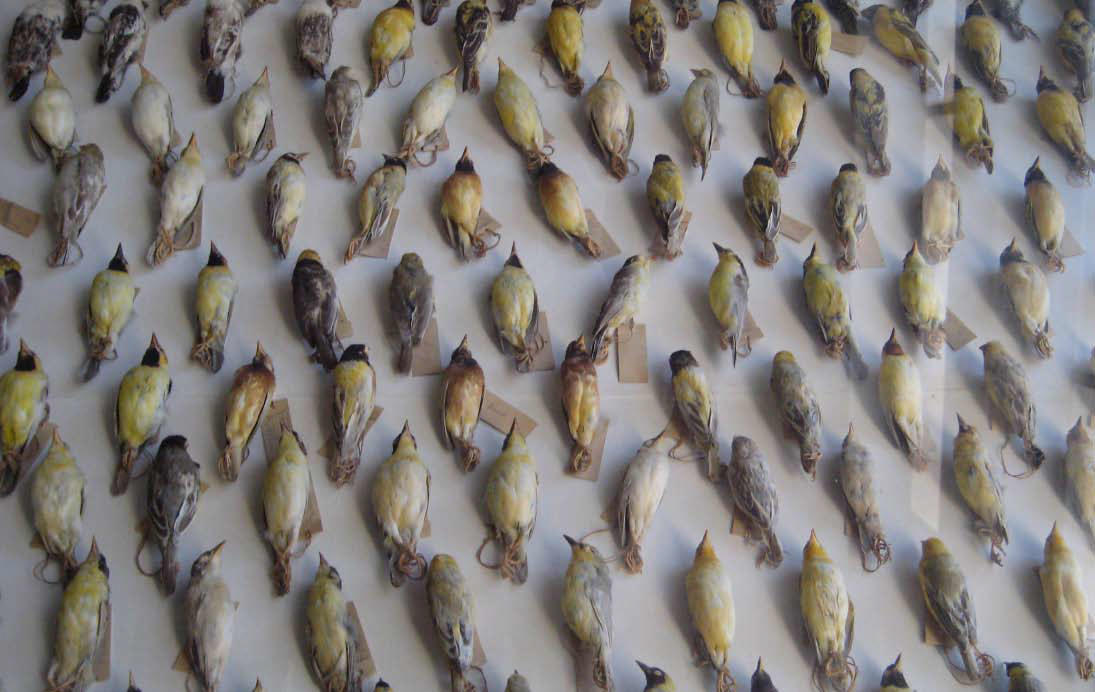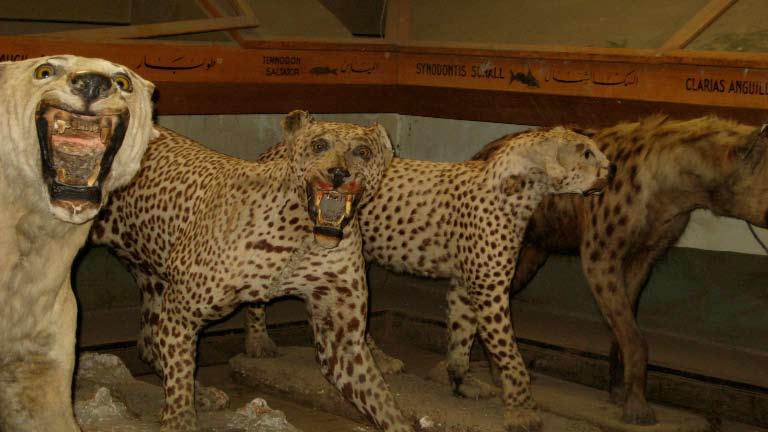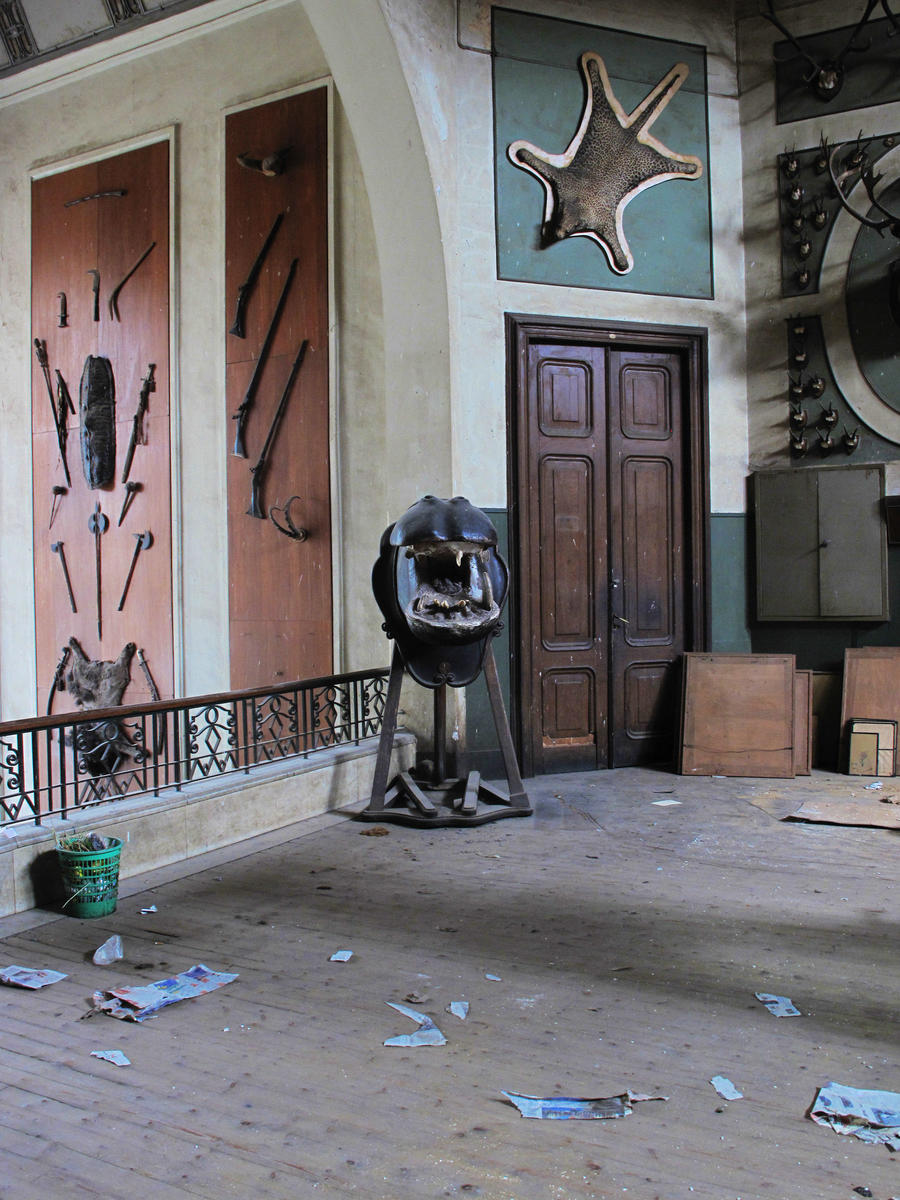
The whitewashed walls of the Cairo Agriculture Museum in Dokki conceal a forgotten memorial to the country’s millennia of agricultural and natural history, from pharaonic-era efforts to anticipate the Nile flood, to the grisly bounty of courtly hunting trips, to a postrevolutionary tallying of national resources.
A succession of official interventions in the museum’s original collection, founded in 1938, testify to another, manmade, history: that of the Egyptian state. Although not all sites at the museum are accessible to the public, the complex currently houses the Cotton Museum, the Museum of Scientific Specimens, the Museum of Ancient Egyptian Agriculture, the Agriculture Museum proper, and, or so we’re told, a Heritage Museum. Claims regarding the nature of Egypt’s statehood — monarchic Arab nationalist or post-infitah — take surreal form within these walls, layering the various exhibition spaces with their respective rhetorics of nationhood, sometimes to hallucinatory effect. A plaque describing “the history of wool in Egypt” nestles in mute and moldering piles of unprocessed wool. First-generation BiscoMisr biscuits, intended originally for the new republic’s soldiers and children, conjure a political shift. An immense, opalescent camel’s stomach hangs inflated behind greasy glass: the strange beauty of an indisputably anachronistic science, proudly presented.
Some displays are more easily situated in the historical continuum of Egyptian statehood than others. The Museum of Scientific Specimens, perhaps the most delirious of the complex, presents a wooden maquette of the first Aswan Dam — polished to a luster, distinctly abstract-looking, and evidently created before that most famous of postrevolutionary national symbols, the Aswan High Dam. Nearby, a graph indicates average acreage (in millions of feddans) of Egypt’s major crops from the period of 1950 — 65. Upstairs, exotic butterflies in a glass box have been arranged to spell “Mubarak”; another box displays the eagle of the Arab Republic of Egypt, and still another, the two-starred flag of the ill-fated United Arab Republic (1958–61).
Other displays suggest political worldviews and scientific epistemologies that defy today’s received theories of being and becoming. On the museum’s first floor, a series of life-size dioramas depicts the rituals and traditions of Egypt’s inhabitants. A special section is devoted to “rural society,” and “Egyptian types” are displayed according to métier: a Qur’anic reciter, a potter, a tent-maker. Meanwhile, the aristocratic pastime of safari hunting has crowded the second floor with stuffed game. In the stairwell, a rhino head, dated “6. Mars. 1910,” greets visitors with a soulful and not unintelligent glass eye. A midsize statue set behind dusty glass represents a sub-Saharan tribesman who appears to have emerged on camel from the pages of a tattered National Geographic. The earnest — one might also say humorless, not to mention imperialistic — approach expounded in the Napoleonic Description de l’Egypte apparently informs the museum’s approach to the “scientific specimens” of the human species (an early print of the document is available in a nearby library, also part of the complex).
The entrance hall of the Agriculture Museum displays a marble plaque commemorating the 1948 visit of Saudi monarch Abd al-Aziz Al Saud; across the hall, a second plaque memorializes a visit by the leader’s son, the new monarch Saud bin Abd al-Aziz Al Saud, in 1954, the year of Gamal Abd El Nasser’s ascension to the presidency. The pendants mark a “before” and “after” to the 1952 revolution. However, if the complex was once deemed worthy of official royal visits, the same cannot be said today.

The postrevolutionary dream of nation-building — evident in the retelling of the history of cotton, wool, and barley; in the display of delicately designed cans of artichoke hearts produced by the Ministry of Agriculture; and in the 1961 inauguration of an “Arab Hall” featuring displays of traditional life in Egypt and Syria — seems to have faded under the bright lights of political vision into a semilucid subterranean of the subconscious.
As if to confirm the site’s waning ability to present an “official” account of history, the museum complex has acquired a new anti-role; it serves as a monument to public invisibility and present-day forgetfulness. Located on the museum grounds are a small police prison tucked away out back, the faithful re-creation of a lost “Pharaonic garden,” an abandoned monarchy-era theater, and an overgrown garden of roses. The paltry entrance fee (a laughable ten piasters per person) and the near absence of visitors (save for a handful of tourists and young couples finding tender hours under the trees) reinforce this feeling of anachronism.
If museums are themselves articulate historical testimonials equal to the objects and narratives they offer up to the public, the Dokki complex attests to the impossibility of a coherent official project of “Egyptian history.” The melancholic decay of history is rarely as articulately dissected as in the wings of the Museum of Scientific Specimens or the display cases of the Agriculture Museum. Nevertheless, an impossible memory of the variety conjured in Chris Marker’s vertiginous film essay La Jetée has rarely been reimagined in such poetic terms.
